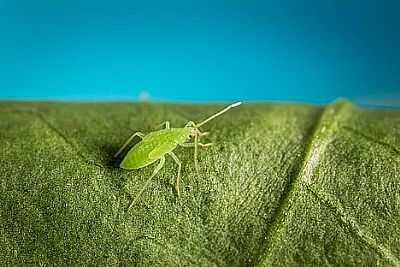MIRICAL - N / Macrolophus pygmaeus (form. Macrolophus caliginosus)
Predatory bug
Target
Use Mirical - N for:
-
Greenhouse whitefly
-
Tobacco whitefly
-
Two spotted spider mite
-
Thrips
-
Eggs of butterflies and tomato leaf miner moth
-
Aphids
-
Leaf miner larvae
Packing
-
100 ml bottle, containing 500 nymphs mixed with wood chips and buckwheat
Dosage MIRICAL - N
|
Rate (ind./m2)
|
m2/ unit
|
Frequency |
Interval (days)
|
Remarks | |
| Preventive | - | - | - | - | |
| Light curative | 10 | 50 | 2x | 14 | |
| Heavy curative | 50 | 10 | 2x | 14 |
The information given below is merely indicative. Tailored advice can be provided if information is available on the local factors that need to be taken into account, such as the crop, the climate conditions and the level of infestation. For the correct approach, please consult a specialist of our company.
How does Mirical - N work
Adult predatory bugs and nymphs actively search for their prey and consume them. In case of whitefly eggs, larvae or pupae only the skin is left behind in its original state.
Application Mirical- N
-
Apply the material on the leaves of plants, in substrate (hydroponics) or in boxes (DIBOX) on small plants.
-
Apply the material in thin layers (max. 1 cm) to allow easy movement of predators.
-
As Macrolophus pygmaeus nymphs are less mobile than adults, MIRICAL - N can be used to control pests in hotspots.
-
Introduce Macrolophus in the beginning of the growing season, as the predatory bug population needs time to establish and develop. After a few months, highly dependent on climatic conditions and availability of food, density of Macrolophus should be high enough to control the pests
-
In case of small infestation of the enemy on the crop: the predators feed on ENTOFOOD every 2 weeks (4 g / acre max. 3 - 4 times).
-
The use of Macrolophus pygmaeus in gerbera is not recommended because the predator can be the cause of damage to the flowers. As nymphs of Macrolophus are less mobile then adult Macrolophus, Mirical - N can be used for biological pest control in hotspots.
Best working conditions Mirical - N
Optimal temperatures for Mirical - N are above 20°C, lower temperatures slow down the development of Macrolophus pygmaeus significantly.
Handling
Biological beneficials have a very short life expectancy and therefore need to be introduced into the crop as soon as possible after receipt. Failure to do so can have a negative impact on their quality. In case you do need to store Mirical - N, please follow the instructions below.
Storage
-
After receipt: 1-2 days
-
Temperature: 8-10°C
-
In the dark (bottle horizontally)
Pesticides can have (in)direct effects on beneficials. Check here



 HellasSITES
HellasSITES